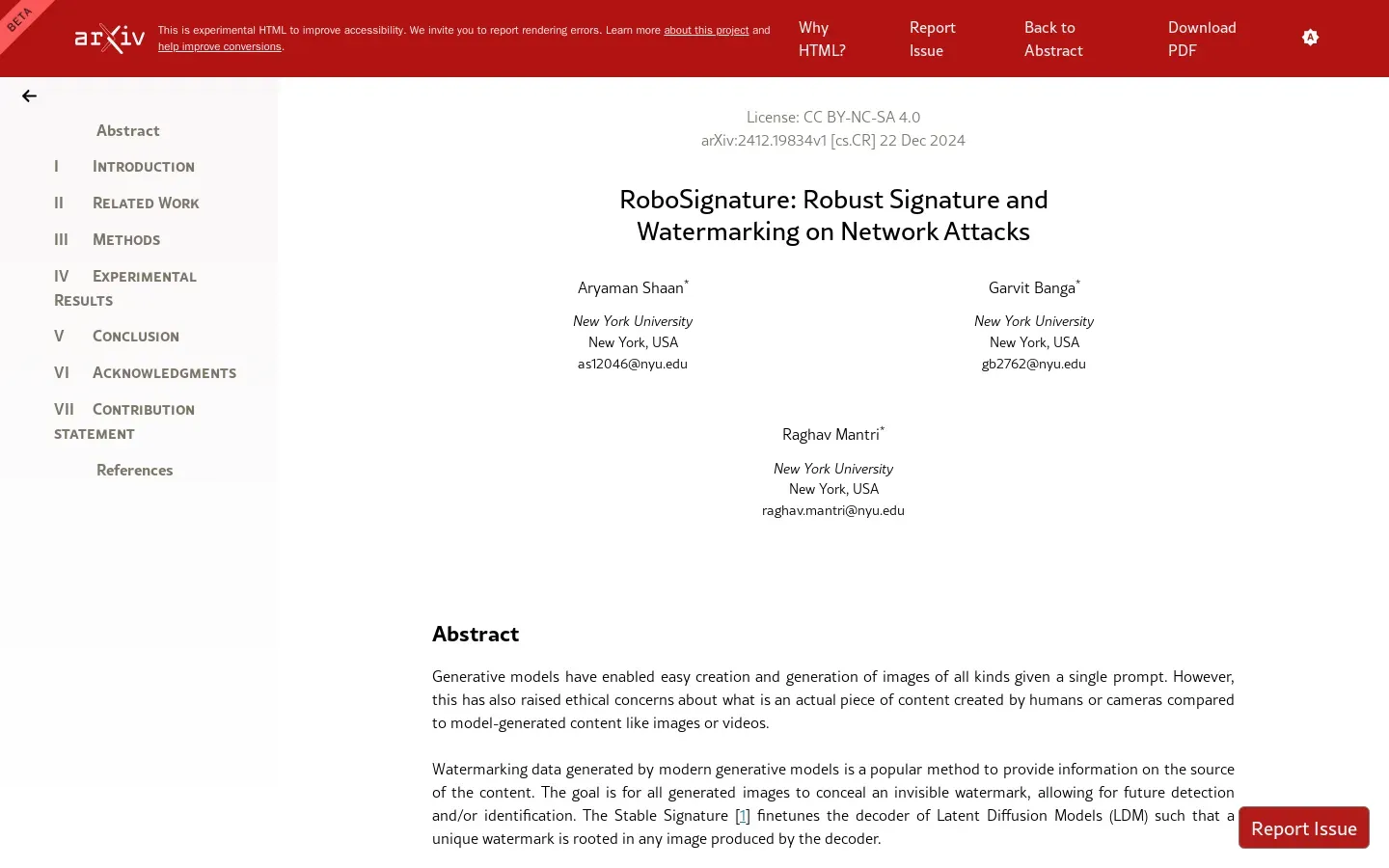
RoboSignature Enhances Digital Content Authentication in Cybersecurity
/ 3 min read
Quick take - Recent research on watermarking techniques for Latent Diffusion Models (LDMs) has revealed important insights into enhancing digital content authentication and regulatory compliance while addressing challenges posed by adversarial attacks.
Fast Facts
- Recent research on watermarking in Latent Diffusion Models (LDMs) aims to enhance digital content authentication and protect against adversarial threats.
- The study utilizes the HiDDeN framework for embedding watermarks in the latent space of generative models, ensuring integrity during fine-tuning.
- Key findings indicate that while watermarking improves authentication, adversarial attacks present significant challenges, necessitating stable signatures resistant to manipulation.
- The research emphasizes the intersection of technology and ethics, highlighting the importance of responsible AI practices and regulatory compliance in digital rights management.
- Future directions include refining watermarking techniques and exploring new frameworks for secure sharing of generative models to foster trust in AI-generated content.
In a world increasingly defined by the digital landscape, the security of generative models becomes paramount, not just for tech companies but for anyone who interacts with AI-driven content. As artificial intelligence continues to evolve, researchers are striving to understand how best to protect these systems from adversarial threats while ensuring compliance with regulatory frameworks. Recent studies shed light on various strategies and techniques aimed at fortifying generative models against malicious attacks and misuse, particularly focusing on watermarking and data integrity.
One of the standout concepts emerging from this research is HiDDeN, or Hiding Data with Deep Networks. This innovative approach offers a novel way to embed information within images or other media, effectively creating a digital watermark that can withstand attempts at removal or manipulation. By utilizing advanced layers of neural networks, HiDDeN ensures that hidden data remains intact even when subjected to adversarial fine-tuning attacks. This resilience is crucial in today’s context where fake images and misinformation can spread rapidly across platforms, undermining trust.
Despite its promise, the application of HiDDeN does face challenges. The complexities of adversarial attack detection systems highlight the ongoing arms race between those developing protective measures and those intent on breaching them. As attackers refine their methods, researchers must continually update their defensive strategies to maintain efficacy. The need for tamper-resistant fine-tuning (TAR) techniques further emphasizes this point; TAR seeks to create models that not only resist unauthorized changes but also ensure authenticity.
The findings regarding watermarking in Latent Diffusion Models (LDMs) expose a multifaceted landscape fraught with difficulties. While watermarking serves as a crucial element for enhanced digital content authentication, researchers identified significant hurdles in ensuring its reliability against sophisticated adversarial tactics. The ability to maintain the integrity of watermarked content while allowing for legitimate usage remains a key concern, pointing to an urgent need for further investigation into more robust watermarking strategies.
Compounding these technical challenges are broader implications surrounding regulatory compliance and digital rights management. As governments around the world establish frameworks governing AI use, adherence becomes critical for developers and organizations alike. This intersection of technology and regulation demands that cybersecurity efforts not only focus on defensive tools but also align with ethical standards and legal requirements. The secure sharing of generative models must balance innovation with accountability, ensuring that creators can protect their intellectual property while fostering an environment conducive to artistic expression.
Looking ahead, the research underscores the importance of collaboration among stakeholders in the AI ecosystem—developers, policymakers, and end-users alike—to harness these advancements responsibly. The future will likely see more sophisticated approaches to securing generative models, integrating ethical considerations into their design from the ground up. As we navigate this evolving landscape, it is essential to remain vigilant about potential vulnerabilities while championing innovations that enhance both security and creative freedom in the digital age.



